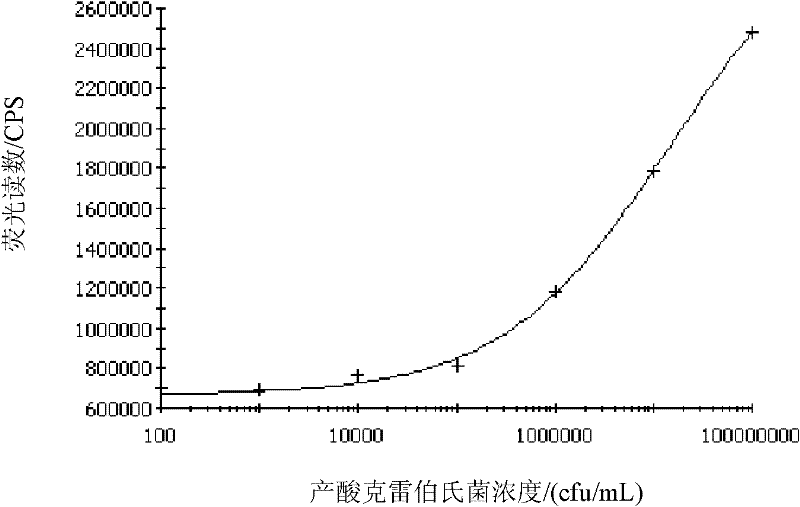Time-resolved fluoroimmunoassay (TRFIA) of Klebsiella oxytoca
A time-resolved fluorescence and Klebsiella technology, applied in the direction of fluorescence/phosphorescence, measuring devices, analytical materials, etc., can solve the problems of interfering sample determination, small molecular weight of markers, and low determination sensitivity
- Summary
- Abstract
- Description
- Claims
- Application Information
AI Technical Summary
Problems solved by technology
Method used
Image
Examples
Embodiment Construction
[0034] The following embodiments will further illustrate the present invention in conjunction with the accompanying drawings.
[0035] Concrete steps of the present invention are:
[0036] 1. Microbiological identification of Klebsiella oxytoca strains
[0037] Materials and equipment: Biolog automatic biochemical identification system (GeneIII), bacterial strain (isolated from Japanese eel by our laboratory).
[0038] Methods: The automatic biochemical identification system was used for identification.
[0039] Results: Table 1 is a table of automatic bacterial biochemical identification characteristics, wherein + means positive, - means negative, the identification result is Klebsiella oxytoca, and the id% is 92.1%.
[0040] Table 1
[0041]
[0042]
[0043]
[0044]
[0045] 2. Preparation of anti-Klebsiella acidogenic antibody (IgG)
[0046] Materials and equipment: Klebsiella oxytoca strain, New Zealand white rabbits, beef extract peptone culture solution, ...
PUM
 Login to View More
Login to View More Abstract
Description
Claims
Application Information
 Login to View More
Login to View More - R&D
- Intellectual Property
- Life Sciences
- Materials
- Tech Scout
- Unparalleled Data Quality
- Higher Quality Content
- 60% Fewer Hallucinations
Browse by: Latest US Patents, China's latest patents, Technical Efficacy Thesaurus, Application Domain, Technology Topic, Popular Technical Reports.
© 2025 PatSnap. All rights reserved.Legal|Privacy policy|Modern Slavery Act Transparency Statement|Sitemap|About US| Contact US: help@patsnap.com



